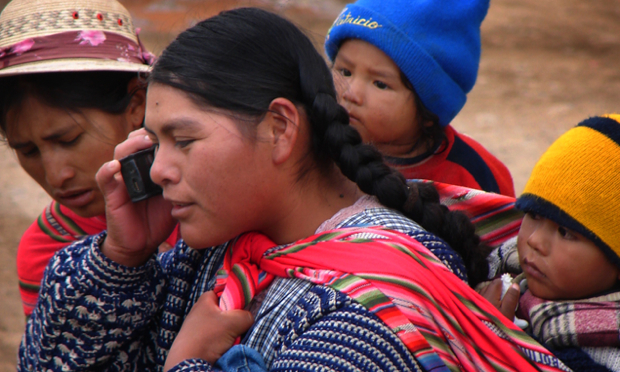
In most of Western Europe, North America, and Asia, the Internet is old. The personal computer led the way, eventually bringing hypertext and multimedia into our offices and now, a huge range of digital appliances that regularly stream more data than they store locally. The growth of data traffic over the next decade will be led by every user relying on more devices for megabyte-dense content.
In most of the rest of the world, the Internet is still quite new. The growth of data traffic in Africa, Latin America, and the Middle East will be led by an expansion in the number of users. But these new users won't follow the same trajectory as their counterparts in the already-industrial world. Deep-rooted cultural differences and the simple fact that most of these users will be encountering the web on mobile media devices means that the Internet's map will need to be redrawn in more ways than one.
Networking giant Cisco has assembled a forecast of the web's growth over the next five years that showcases some startling numbers:
- By 2015, there will be nearly 3 billion Internet users. That's more than 40 percent of the world's projected population.
- Annual global IP traffic will reach approximately one zettabyte threshold (966 exabytes) by the end of 2015. As The Atlantic's Nicholas Jackson notes, a "zettabyte is equal to 1,000,000,000,000,000,000,000 bytes, or the same amount of digital data that was on the entire Internet in 2010."
- Some of that will come from data-hungry households: 6 million will generate over a terabyte per month in Internet traffic, up from just a few hundred thousand in 2010. Cisco calls this group, concentrated in the United States, Japan, and Western Europe, "the terabyte club."
- Currently, there are roughly as many networked devices as there are people on the planet. By 2015, they'll outnumber us two to one.
- We'll also reach the wireless tipping point: Right now, wired devices account for 63% of the Net's traffic; by 2015, wireless will be in the majority with 54%. Consumer use will tip even more heavily.
- IP traffic is growing fastest in Latin America- an estimated 50% growth rate between 2010 and 2015-- followed closely by the Middle East and Africa. Central and Eastern Europe aren't far behind.
- Despite all of this, the overall Internet growth curve, at least in terms of year-over-year percentages, is actually bending downwards a little. Traffic octupled between 2005 and 2010; it will "only" quadruple between 2010 and 2015.
Those are the numbers. For a sense of how this growth will likely differently affect different parts of the world, a new report by Octavio Kulesz on digital publishing in developing countries for the International Alliance of Independent Publishers offers some perspective. "[W]e must ask ourselves how useful it would be to reproduce the prototypes from the North in the South," Kulesz writes, "as in addition to the disparities in infrastructure, there are also enormous cultural, linguistic and even religious differences... [T]he experience of reading from the screen of a cell phone means something very different to a Chinese user, for example, than it might do to a European one, due to the qualitative difference in the characters used in each case."
The consumer desire for data in the global south is enormous, but infrastructure investment and research and development still could potentially prove to be a bottleneck for growth. Kulesz is generally less optimistic on this front than Cisco. Nevertheless, Kulesz is optimistic that the global south and other parts of the developing world can work together to blaze their own trails:
Sooner or later, these countries will have to ask themselves what kind of digital publishing highways they must build and they will be faced with two very different options: a) financing the installation of platforms designed in the North; b) investing according to the concrete needs, expectations and potentialities of local authors, readers and entrepreneurs. Whatever the decision of each country may be, the long-term impact will be immense.
To a certain extent, he also notes, you don't need an infrastructure as large as the West's to link up devices and cultures that are entirely different from the West's:
Of course, it would be extraordinary to obtain 80% Internet penetration in Africa or make huge investments in infrastructure throughout the developing regions, but--as Steve Vosloo observed--that may never happen. And in the event that it does occur some day, by then the industrialized countries will no doubt have made another technological leap, meaning that the disparity in infrastructure would still persist. So the most effective option is to start working right now, with what is available.
We're increasingly looking at a global mobile world where video and audio will be as much or more of a driving factor as text. At the same time, the sharing of information and the connections forged between people within and across national and cultural borders means that the sheer amount of bandwidth consumed might be the least important thing that happens to the web in the years to come. In the Arab Spring, we've already seen what a little bit of data can do to a society that hasn't had any. The effects of this massive shift on the developing world could be truly astounding.
[Image: Flickr user MattJP]
[Front Image: Ivan Kashinsky]
Follow Fast Company on Twitter.
No comments:
Post a Comment